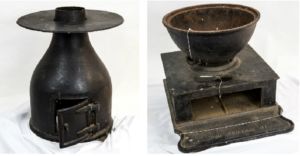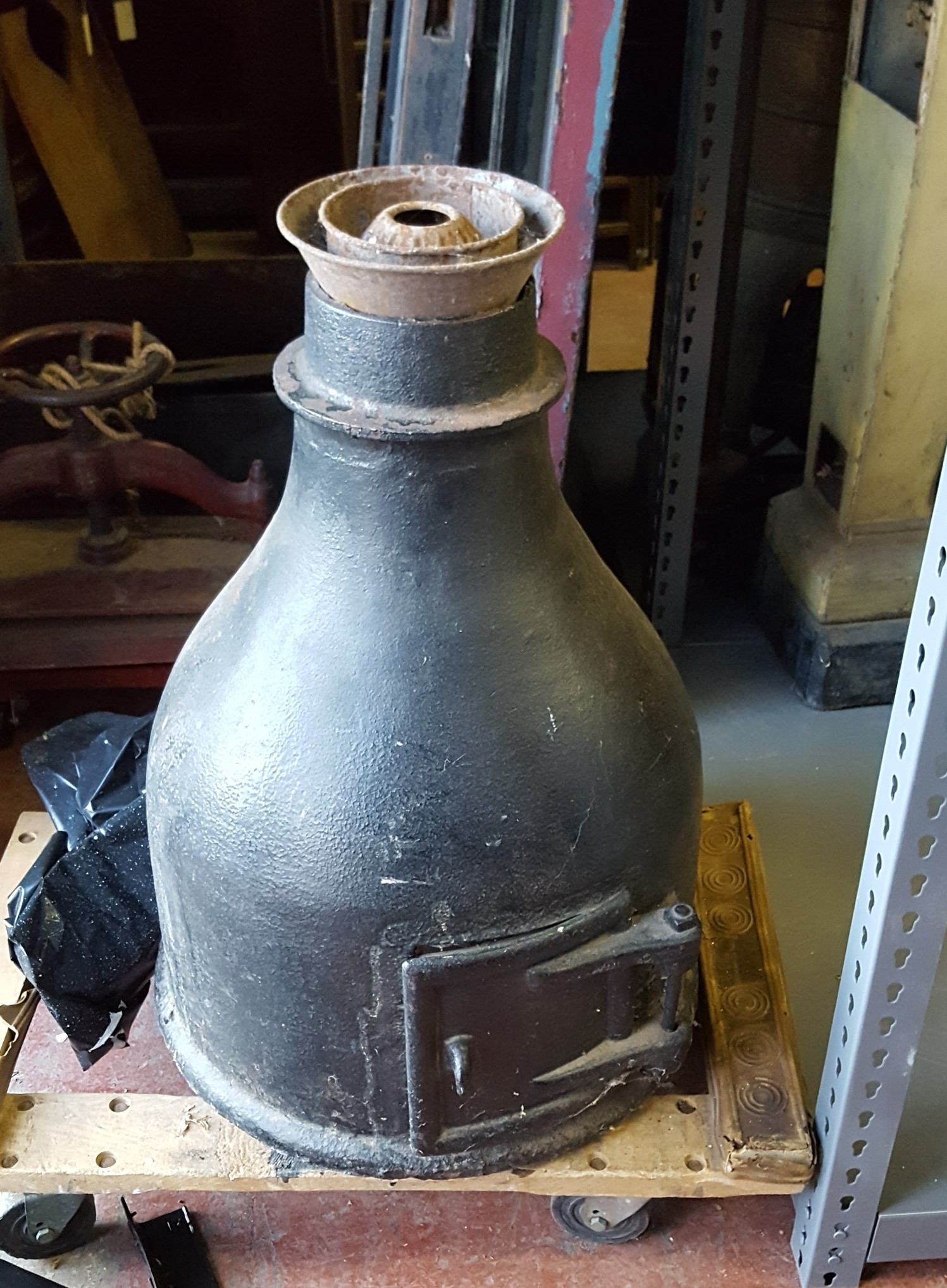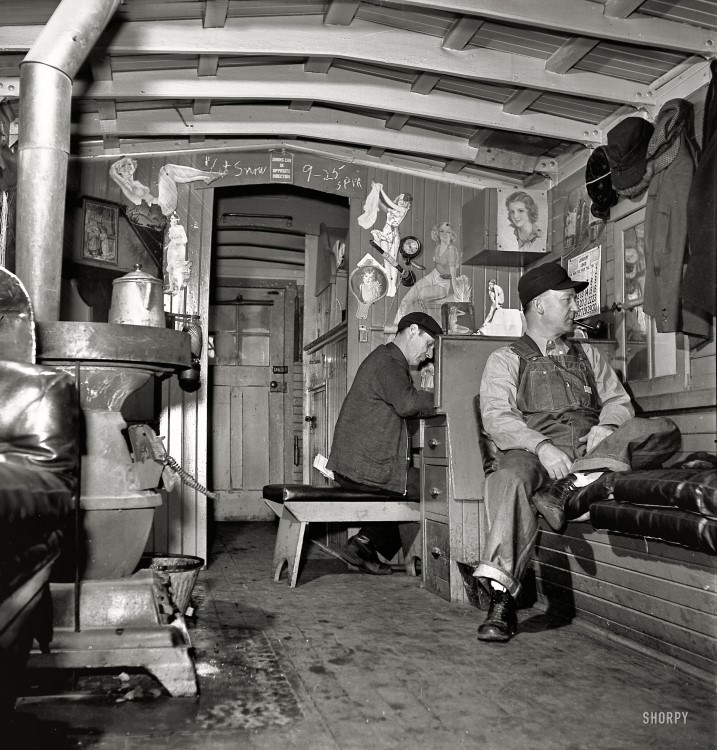
November 16, 2017
Sometimes the most interesting part of an object is the mystery surround it.
We don’t know much about the origins or history of the caboose stove that is today’s Object Lesson, but up until very recently, we didn’t know that it even was a caboose stove!

Part of the caboose stove as we found it in the garage.
While cataloging the garage at HHM, we encountered several pieces of cast iron, each weighing over a hundred pounds and barely moveable. While we could see that the pieces clearly went together somehow, we couldn’t assemble the pieces in any coherent way because of their size and weight—and because they were impossible to make heads or tails of!
The domed chimney with a door clearly suggested oven, but the bottom of that piece was open which didn’t seem right. The disc piece could have covered the bottom of the domed piece, but it didn’t sit snuggly on the bottom, so that wasn’t right. The other three pieces, though they had the same heft and color as the dome and disc, but didn’t seem to neatly make any logical whole.
In my work at HHM (and in life more generally), I have learned that the smartest move you can make when you aren’t sure about something is to surround yourself with smart and/or creative people then shut up and listen. Our breakthrough on the caboose stove came when our very clever intern, Floris, theorized it was indeed a stove and, since one piece was stamped with Central Railway, tried googling “train” and “stove.”
A few minutes later, she had a picture of a similar-looking artifact on her phone. From there, puzzling out how the stove fit together was a piece of cake and suddenly a mystery of the collection was solved!
This caboose stove was once used in a caboose that traveled the Iowa Central Railway, probably around the turn of the 20th century, judging by images of similar caboose stoves.

These stoves were bolted directly to the train floor and featured other design features that make them specially adapted to use on a moving train. A lip on the top to kept pots and pans from sliding off the stove, and a double-latching door prevented an accident involving the coals that would move as the caboose rocked back and forth on the rails.
Author Bio
Heather Hoagland is the Collections Manager at Hennepin History Museum. She has a Masters in Museum Studies from George Washington University. Before joining the staff at HHM, she worked at Ford’s Theatre and the Smithsonian National Museum of the American Indian.
